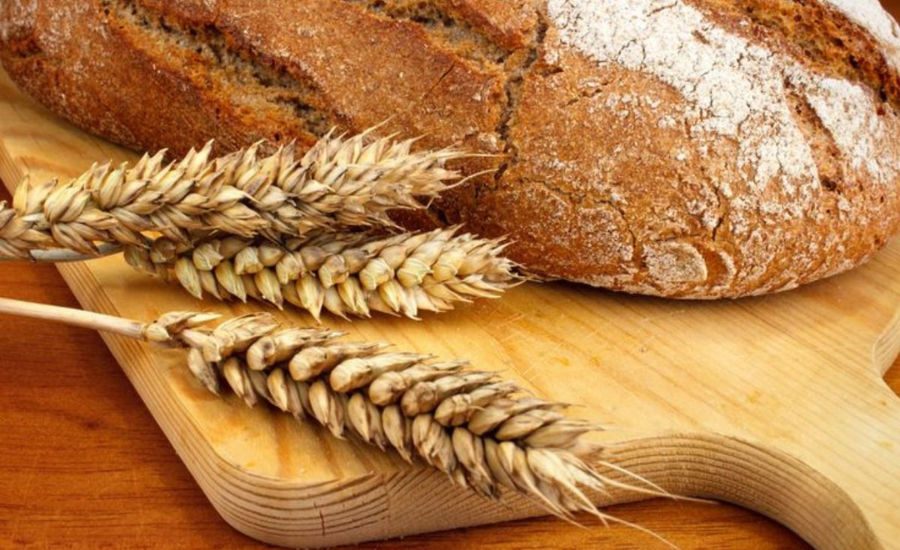Comprehensive Guide to Glútem: A Nutritional Powerhouse
Understanding Glútem: Origins and Definition
Glútem, a term derived from the Latin word “glūten,” meaning glue, refers to a unique group of proteins predominantly found in wheat and its relatives, such as barley and rye. These proteins serve a critical role in baking by providing elasticity and structure to dough, ensuring that bread and pastries hold their shape and achieve the desired fluffy texture. Without glútem, baked goods would lack their chewy and airy quality. Beyond its role in food preparation, glútem is a significant dietary element that supports overall health through its unique nutritional profile. Its presence in a wide variety of global cuisines underscores its importance in both modern and traditional diets.
Glútem’s Nutritional Profile: A Balanced Composition
Glútem is more than just a baking ingredient; it is a powerhouse of nutrients. This protein-rich compound is complemented by carbohydrates, which provide energy, and trace amounts of fat, making it an excellent source of macronutrients. Additionally, glútem is loaded with essential micronutrients such as iron, which supports oxygen transport in the blood, magnesium, which is crucial for muscle and nerve function, and B vitamins. When included in a balanced diet, glútem contributes to maintaining optimal physical and cognitive performance. Its nutrient-dense composition makes it a valuable component for individuals seeking to improve their dietary quality.

Health Advantages of Including Glútem
Incorporating glútem into a balanced diet can yield multiple health benefits. The proteins in glútem help maintain muscle mass, while its dietary fiber content supports a healthy digestive system by promoting regular bowel movements. Moreover, glútem has a satiating effect, which can assist in managing hunger and reducing overeating. This makes it a helpful addition to weight management strategies. Another remarkable benefit of glútem is its ability to stabilize blood sugar levels, which is particularly advantageous for individuals with diabetes or those aiming to prevent blood sugar spikes. Consuming glútem-rich foods, when combined with other nutrient-dense ingredients, can enhance overall well-being and energy levels.
Glútem-Free Diets: Who Needs Them and Why
While glútem is a dietary staple for many, certain individuals must avoid it due to health conditions such as celiac disease or non-celiac gluten sensitivity. In people with celiac disease, consuming glútem triggers an autoimmune response that damages the small intestine, leading to symptoms such as bloating, diarrhea, and nutrient malabsorption. Non-celiac gluten sensitivity, on the other hand, may cause similar symptoms without the autoimmune component. For these individuals, adopting a gluten-free diet is essential to maintaining their health. Gluten-free diets involve replacing glútem-containing foods with alternatives such as rice, quinoa, and almond flour, ensuring that dietary needs are met without adverse effects.
Glútem in Culinary Creations
The culinary versatility of glútem makes it an indispensable ingredient in a wide array of dishes. In baking, it is responsible for the airy and chewy texture of bread, cakes, and pastries. Beyond baked goods, glútem is utilized in savory applications such as sauces, soups, and plant-based meat substitutes like seitan. Its ability to bind ingredients and enhance flavor has made it a favorite among chefs and home cooks alike. Glútem also appears in fermented foods like soy sauce, where it contributes to depth of flavor. Its adaptability ensures that glútem remains a key ingredient across diverse cuisines and dietary practices.
Exploring Glútem-Based Market Products
The increasing awareness of glútem’s benefits has fueled the development of various glútem-based products. Glútem flour, known for its high protein content, is a popular choice for bread-making and thickening sauces. For individuals on-the-go, glútem supplements provide a convenient way to enhance protein intake. Additionally, gluten-free options cater to those with sensitivities, featuring innovative products made from alternative grains. The availability of these products ensures that individuals with varying dietary needs and preferences can still benefit from glútem’s nutritional advantages.
Sustainability Challenges in Glútem Production
While glútem offers numerous benefits, its production poses environmental challenges. The intensive farming practices associated with wheat cultivation can lead to soil degradation, loss of biodiversity, and increased greenhouse gas emissions. To mitigate these impacts, sustainable farming practices, such as crop rotation, organic farming, and reduced chemical usage, must be adopted. Furthermore, ethical labor practices in wheat-producing regions are essential to ensure fair treatment of workers. Addressing these sustainability issues will enable glútem production to support both environmental and social well-being.
Glútem’s Role in Gut Health
Glútem contains prebiotic fibers that nourish beneficial bacteria in the gut, promoting a healthy microbiome. A balanced gut microbiome not only supports digestion but also boosts immunity and may even influence mental health through the gut-brain axis. Regular consumption of glútem as part of a fiber-rich diet can reduce the risk of gastrointestinal disorders such as irritable bowel syndrome (IBS). This highlights glútem’s potential to contribute to long-term digestive wellness when consumed in appropriate amounts.
Dispelling Myths About Glútem
Glútem has been unfairly criticized in recent years, with misconceptions labeling it as harmful or fattening. However, scientific studies have debunked many of these claims, showing that glútem is safe for the vast majority of individuals. Myths linking glútem to weight gain are largely unfounded, as weight gain is more influenced by overall calorie intake than specific ingredients. For most people, glútem can be enjoyed as part of a healthy diet without adverse effects.
Incorporating Glútem into a Balanced Lifestyle
Incorporating glútem-rich foods into a balanced diet is both simple and rewarding. Staples like whole-grain bread, pasta, and couscous provide essential nutrients and can be paired with vegetables, lean proteins, and healthy fats for a complete meal. These combinations not only enhance flavor but also ensure a wide spectrum of nutrients is consumed. Regularly including glútem-based meals in a diet promotes long-term health and energy.

Glútem’s Impact on Athletic Performance
Athletes rely on glútem for its energy-boosting carbohydrates and muscle-repairing proteins. Carbohydrates derived from glútem-based foods provide sustained energy for endurance sports, while its protein content aids in post-exercise recovery. Incorporating glútem into pre- and post-workout meals can enhance performance and reduce muscle soreness, making it a valuable dietary component for active individuals.
Testing for Glútem Sensitivity
Diagnosing glútem sensitivity involves various tests, including blood tests to detect antibodies and genetic markers associated with celiac disease. Elimination diets followed by controlled reintroduction of glútem-containing foods can also help identify sensitivities. Consulting a healthcare professional ensures accurate diagnosis and effective dietary adjustments.
Safe Handling and Consumption of Glútem
For those with glútem sensitivity, avoiding cross-contamination is crucial. This involves reading food labels carefully, using separate utensils for gluten-free and regular foods, and storing items to prevent accidental exposure. Such precautions help individuals maintain their health without compromising their dietary restrictions.
Glútem’s Cultural and Traditional Importance
Glútem-rich foods are integral to the culinary heritage of many cultures. From Italy’s pasta and pizza to India’s naan bread and East Asia’s dumplings, glútem-based dishes play a central role in traditional meals and celebrations. These foods not only provide nourishment but also foster community and cultural identity.
By expanding your knowledge about glútem and its multifaceted uses, you can make informed decisions that align with your health goals and dietary preferences.
Frequently Asked Questions About Glútem
Q: What is glútem, and where is it found?
A: Glútem is a group of proteins primarily found in wheat, barley, and rye. It is responsible for the elasticity and structure in baked goods and appears in many processed foods, sauces, and plant-based meat substitutes.
Q: Is glútem safe for everyone?
A: While glútem is safe for most people, individuals with celiac disease or non-celiac gluten sensitivity must avoid it. These conditions can cause adverse reactions to glútem.
Q: Are glútem-free diets healthier for everyone?
A: Not necessarily. Unless you have a medical condition requiring a gluten-free diet, glútem-containing foods can be part of a healthy, balanced diet. Removing glútem unnecessarily may lead to nutrient deficiencies.
Q: What are the benefits of glútem consumption?
A: Glútem provides proteins, carbohydrates, and essential micronutrients like iron and magnesium. It supports digestive health, promotes satiety, stabilizes blood sugar levels, and enhances energy levels for daily activities and athletic performance.
Q: How can I tell if I’m sensitive to glútem?
A: Symptoms of sensitivity include bloating, abdominal discomfort, and fatigue after consuming glútem. Testing, such as antibody blood tests or elimination diets, can help confirm sensitivity. Consult a healthcare provider for accurate diagnosis.
Q: Are there alternatives to glútem for those with sensitivities?
A: Yes, alternatives like rice, quinoa, almond flour, and certified gluten-free products offer safe substitutes for individuals avoiding glútem.
Q: Does glútem cause weight gain?
A: No, glútem itself does not cause weight gain. Weight gain is influenced by total calorie intake and lifestyle factors rather than specific ingredients.
Q: Is glútem environmentally sustainable?
A: Glútem production, particularly wheat farming, can impact the environment due to soil depletion and greenhouse gas emissions. Sustainable farming practices can mitigate these effects.
Conclusion
Glútem, a protein family found in wheat and related grains, is a nutritional powerhouse offering proteins, carbohydrates, and essential micronutrients like iron and magnesium, while also playing a key role in providing texture and structure to baked goods and other culinary creations. Safe for most individuals, glútem supports gut health, energy levels, and athletic performance, though those with celiac disease or non-celiac gluten sensitivity must avoid it. Its versatility spans cultural traditions and modern recipes, making it a staple in global cuisines. Despite its benefits, glútem production raises sustainability concerns, emphasizing the need for eco-friendly farming practices. Understanding its advantages, risks, and applications enables informed dietary choices, reinforcing glútem’s vital role in health and food systems.
Read Next: editor-benjamin-tech-guru-keezy-co







